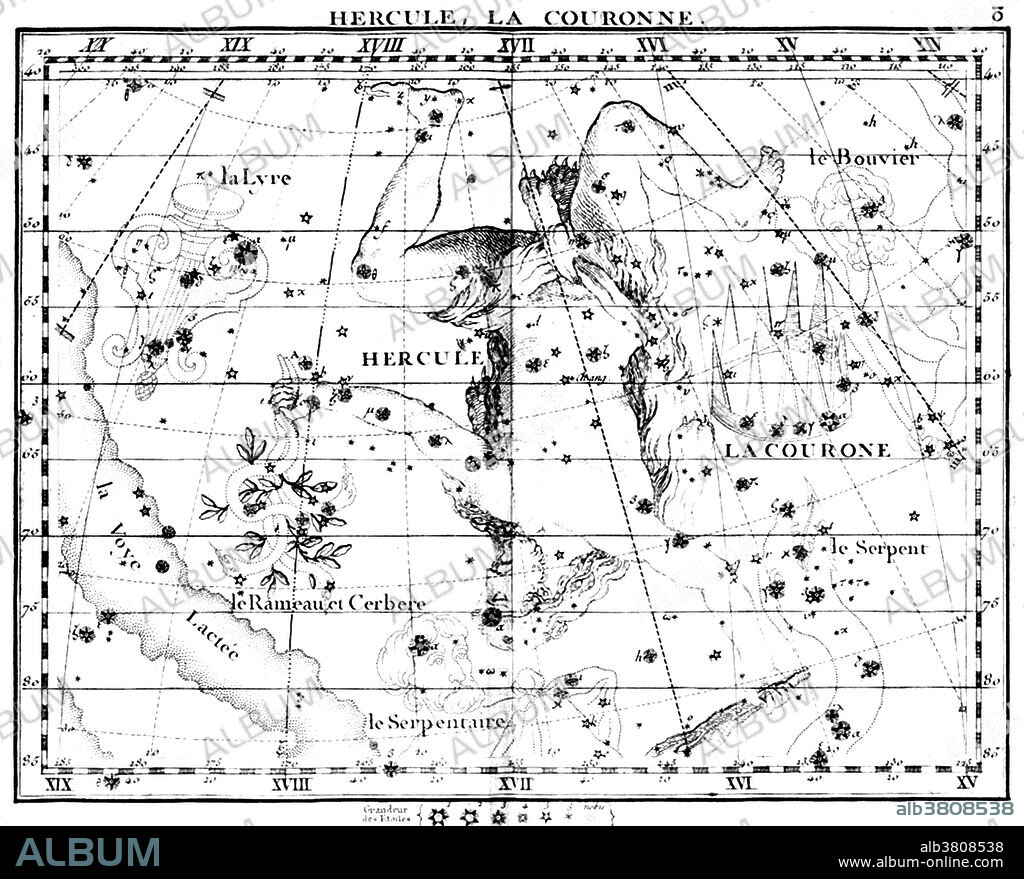alb3808538
Hercules Constellation, 1729

|
Ajouter à une autre Lightbox |
|
Ajouter à une autre Lightbox |



Avez-vous déjà un compte? S'identifier
Vous n'avez pas de compte ? S'inscrire
Acheter cette image
Titre:
Hercules Constellation, 1729
Légende:
Voir la traduction automatique
Hercules is a constellation named after Heracles, the Roman mythological hero adapted from the Greek hero Heracles. Hercules was one of the 48 constellations listed by the 2nd century astronomer Ptolemy, and it remains one of the 88 modern constellations defined by the International Astronomical Union. It is the fifth largest of the modern constellations.The Atlas Coelestis is a star atlas published posthumously in 1729, based on observations made by the First Astronomer Royal, John Flamsteed. The Atlas, the largest that ever had been published and the first comprehensive telescopic star catalogue and companion celestial atlas, contains 26 maps of the major constellations visible from Greenwich, with drawings made in the Rococo style by James Thornhill. One of his main motivations to produce the Atlas, was to correct the representation of the figures of the constellations, as made by Bayer's, Uranometria (1603). Bayer represented the figures viewed from behind (not from the front, as was done since the time of Ptolemy), which reversed the placement of stars and created unnecessary confusion.
Crédit:
Album / Science Source / U.S. Naval Observatory Library
Autorisations:
Modèle: Non - Propriété: Non
Questions sur les droits?
Questions sur les droits?
Taille de l'image:
4200 x 3386 px | 40.7 MB
Taille d'impression:
35.6 x 28.7 cm | 14.0 x 11.3 in (300 dpi)
Mots clés:
 Pinterest
Pinterest Twitter
Twitter Facebook
Facebook Copier le lien
Copier le lien Email
Email
